There are tons of ingredients in the beauty products we use today, some good, some not so good. The beauty industry has made leaps and bounds when it comes to both personally safe and environmentally safe ingredients and packaging.
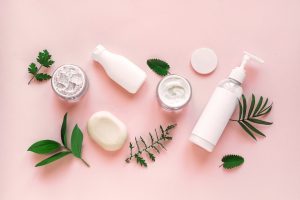
However, there are still a few that should be avoided when possible. Some of these are very destructive, like plastics, and a couple that are destructive only under certain circumstances (like sunscreen). Either way, education is key so that you can make an informed decision when purchasing products for your home.
Feel free to skip ahead to our Infographic for a quick rundown, or read our detailed article below.
1. Microbeads
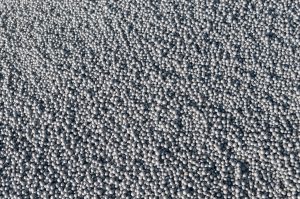
Microbeads are small balls of plastic that are used as exfoliators in some face washes, toothpaste and body products. Think of the white beads you used to see in your face or body washes.
Unfortunately, these microbeads have been found as a contaminate in many of our waterways and oceans. Recently most countries have elected to ban the use of microbeads. However, they can still be found in some products and the effects of their use are still being felt.
Not only do microbeads affect the fish and marine life that eat them, but microbeads can also affect human health. There have been a few studies that suggest that microbeads contribute to microplastics.
Microplastics are particles of plastic under 5mm that have been broken down by the sun and movement of the water, creating small sometimes microscopic pieces of plastic that pollute the water.
These microplastics may have health implications for us. If consumed through fish and other marine wildlife the microplastics have the potential to enter into the gut lining and into the bloodstream.
The Good: Microbeads are used as a mild exfoliator in skincare, oral care and body care products.
The Not So Good: Microbeads contribute to microplastics in our oceans and waterways. Microbeads have been found in the stomachs of fish and other marine wildlife, having potential implications for the health of both the oceans and for us as humans.
Swap For: Enzyme exfoliators can be brought into your skincare routine to replace physical exfoliators, they actually are generally better for your skin than an abrasive exfoliant anyway.
If you miss the feeling of the little beads then maybe look for products that use jojoba beads which are made out of jojoba wax rather than plastic. In terms of toothpaste, most companies have opted out of the use of microbeads and relied on their already effective formulations to keep your pearly whites bright.
2. Natural Ingredients
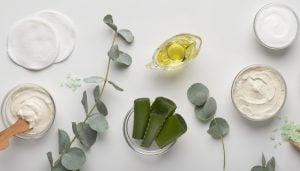
Natural ingredients, while they may sound great and appeal to many people’s preference for something naturally occurring, they aren’t as good for the environment as one may hope.
Unlike synthetics or natural identicals, natural ingredients put undue pressure on environmental resources. For instance, consider the demand that is created when a new naturally-occurring ingredient becomes popular.
The increase in demand may lead to deforestation to create farms, displacement of wildlife, transportation of the ingredient, processing to make the ingredient usable and an increase in unethical labour practices.
Synthetic ingredients, whilst also having an environmental impact don’t have the same level of impact that natural ingredients do. Synthetic ingredients, despite the online rumours, are often safer, and less irritating than some natural ingredients.
This isn’t a reason to avoid natural ingredients if that is your preference but ensuring that the natural ingredients you intend to use are being ethically sourced and farmed.
The Good: There’s not really any significant benefit to the skin by using a natural product over a synthetic but some natural products are formulated with an environmentally conscious mindset.
The Not So Good: Unfortunately natural ingredients can often have a detrimental impact on the health of the environment through their production. Natural ingredients put extra strain on the environment as they need to be farmed, the land needs to be cleared for farming, transported, and purified.
All of these processes contribute to a negative environmental impact and strain natural resources. Synthetic ingredients, generally have less of an impact environmentally and work just as well, if not better.
Swap For: Where possible it is best to go for synthetic or natural identical ingredients or do your research to ensure that the source of the natural ingredients is sustainable and ethical.
3. Silicones
![]()
Silicones are found in many products such as foundations, concealers, moisturizers and hair care. Silicones are used to reduce friction between the hair shafts, making it look smoother, improve the appearance of the skin, increase hydration and help your makeup to stay all day.
Silicones often get a bad reputation in the clean or natural beauty industry but not necessarily for the right reasons. Silicones have been found to be present in waterways and oceans. While their full environmental impact isn’t fully known, the fact that they are found in our waterways says something about both the lack of research and the water treatment techniques in use. Silicones are naturally degradable which means that while it may take a while, they do breakdown, unlike plastics.
The Good: Silicones help to smooth out the appearance of the skin, reduce friction and damage to the hair shaft and can, in some cases, improve the moisture content of the skin.
The Not So Good: Silicones have been found to be present in waterways and oceans, however, the concentrations are low and the effects are somewhat unknown. Despite the myth that silicones aren’t degradable, they are. The process of filtering them out requires the use of clays and sediments, both of which are naturally occurring. Some even breakdown with exposure to UV rays from the sun.
Swap For: You don’t need to avoid silicones, best to advocate for better water processing or research into the impact of silicones on the environment. There isn’t an alternative to silicones as they are such a unique ingredient for the skin and hair but if you are wanting to avoid them just ensure you hunt down silicone-free products.
4. Sunscreen

By now we all know of the benefits of sunscreen for your skin, helping to protect it from the harmful rays of the sun and reduce the occurrence of skin cancers. What you may not be aware of is the environmental impact of sunscreen. Now, before you start considering ditching the sunscreen for a hat and sun shirt, don’t, keep both.
Sunscreens can be found in products such as sunscreens, moisturisers, lip balms and cosmetics. They are used to protect the skin from UV damage which has been linked to skin cancers and accelerated aging.
Sunscreens, particularly chemical sunscreens, have come under scrutiny for their potential environmental impact. Chemical sunscreens like oxybenzone, octocrylene and avobenzone have been implicated in bleaching of coral reefs with some countries even banning their use. However, what you need to know about this potential environmental impact is that it may not be as significant as you think.
Sunscreen ingredients including physical and reef-friendly sunscreen ingredients have been implicated in coral bleaching. However, there are over 200 more significant contributing factors to coral bleaching than sunscreen, including rising water temperatures.
While some sunscreen ingredients cause less coral bleaching, experts are advocating to continue using sunscreen despite the potential environmental impact. It’s all about balancing your health with the health of the oceans.
The Good: Sunscreens protect your skin from the damage caused by UV rays which have been linked to skin cancers and aging.
The Not So Good: There is some evidence to suggest that both chemical sunscreens and physical sunscreens like zinc may contribute to coral bleaching.
Swap For: Keep your sunscreen and opt for reducing other contributing factors to coral bleaching. If you are looking to reduce your impact look into reef-friendly or zinc-based sunscreens which have a slightly less detrimental effect on coral reefs. Always make sure to use enough sunscreen and reapply regularly.
5. Triclosan

Triclosan is an antibacterial ingredient that is used in antibacterial soaps and body washes as well as hand sanitizers. Triclosan is often used to help support acne treatments. However, triclosan has, in recent years, fallen out of favor due to potential environmental and health implications.
Triclosan, as an antibacterial ingredient may contribute to antimicrobial resistance both in humans and animals that come into contact through waste. While the concentration of triclosan that is likely to end up in the environment is relatively low, many are arguing that its use should be further limited.
Antimicrobial resistance is one of the most significant threats to the effectiveness of antibiotics and the World Health Organisation ranks antimicrobial resistance high on its list of threats to health.
Antimicrobial resistance, as you may know, is the resistance of bacteria to antibiotics. Antimicrobial resistance reduces our ability to treat serious infections.
The Good: Triclosan and other antibacterial soaps help to reduce bacteria on the skin. It is often used for products designed to help support acne treatments.
The Not So Good: As antibacterial ingredients, they can be linked to antimicrobial resistance, think superbugs. This may affect organisms that come in contact with the ingredient such as organisms that live in the oceans or waterways or generally to the strength of antimicrobial resistance in humans.
Swap For: Good old soap and warm water. There is little evidence to suggest that antibacterial products are better than using a gentle soap and washing your hands or skin thoroughly.
6. Fragrance

Fragrance is found in most products including, moisturisers, soaps, cosmetics, perfumes, pretty much every product. It is an important part of the formulating process as it improves the scent (obviously) and the useability of the product, particularly when an active ingredient has a bit of an odd smell.
However, in terms of the effect on the environment, some studies have suggested that some fragrance ingredients, both natural and synthetic may impact the immune health of marine life. This research is relatively new but important to keep in mind when demanding better practices from companies.
Unfortunately, the ingredients used as a fragrance in products are considered intellectual property, meaning that the company doesn’t have to list them. This can make it hard to identify and avoid particular ingredients that may be contributing to the environmental impact.
However, the main ingredient that has been linked to this effect on marine life is PCPP so as more research is conducted, the relevant authorities are likely to change legislation around its use.
The Good: Fragrance improves the scent of a product and the useability. In short, it makes the product smell nice.
The Not So Good: They may not be broken down in water processing. Some studies have suggested that fragrance ingredients may impact the immune system of marine life. This research is relatively new.
Swap For: As fragrance is considered Intellectual Property it can be difficult to know if you are avoiding harmful fragrance ingredients. The best thing to do to swap it out is look for companies that are transparent about their fragrance formulation or use non-irritating, safe or natural identical scents.
7. Palm Oil
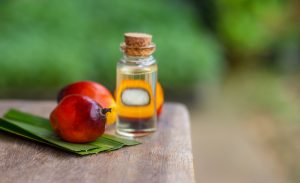
Palm oil is used in many soap, body and face cleansers and well as in some moisturizing products. Palm oil is in so many different products, including many food items, it can be hard to avoid.
The issue with palm oil is that it is similar to that of naturally-derived ingredients, it contributes to deforestation, pollution through transportation, and a decrease in biodiversity and habitats for animals such as the orangutan. The increase in demand also created issues with worker abuse and food security.
Palm oil’s impact is significant and strongly felt in the areas and countries it is produced in. There are however, some companies that are funding and supporting the sustainable palm oil industry, so you don’t need to miss out on the benefits of this ingredient. Just ensure that the source of your palm oil is ethical and sustainable, do your research.
The Good: It’s a great ingredient that helps to keep the skin from being stripped by cleansing products.
The Not So Good: Palm oil has been linked to destruction of rainforest and the habitats of many animals as well as pollution, soil erosion and climate change.
Swap For: Try to find sustainably sourced palm oil whenever possible.
8. Plastic Packaging
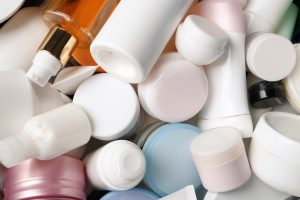
Plastic packaging is the majority type of packing in the skincare and cosmetic industry and unfortunately, it is a major contributor to landfill and ocean microplastics. One of the biggest issues with plastic packaging is that it is not always recyclable in your local area.
Plastic packing is at the heart of the issues of consumer waste and tells us a little about the way we consume. With the ease of use and the disposable mindset at the forefront of the needs of the consumer, it can be a hard issue to tackle.
The best ways to avoid contributing to plastic waste is to find sustainable alternatives such as glass, recycled plastic, biodegradable or degradable packaging or send your products to a company that specialises in recycling cosmetic packaging.
The Good: It’s cheap and often allows for easy application or use.
The Not So Good: Plastic packaging is adding to plastic pollution and without adequate recycling options, plastic packaging contributes to landfill and ocean microplastics.
Swap For: Opt for sustainable packaging options such as glass, biodegradable or degradable packaging. Alternatively, ensure that the products you are buying are recyclable in your local area.
There you have it! Now that you are informed, you can make your own choices about which beauty products are right for you. You can learn more science-based information about different skin care products and skin care reviews on our blog!

